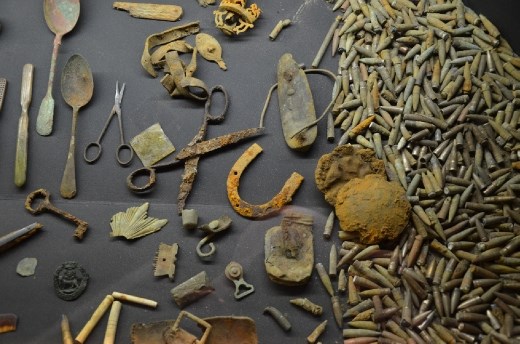We woke up to the most amazing European breakfast for cheeses, breads, pastries and preserves; bacon and eggs; and a variety of juices, milk and coffees. There was an insane amount of food put out of which we barely put a dent; we sure tried.

Second order of the day was the Flanders Field museum, located just a couple blocks from our hotel. The museum is located inside the Cloth Hall in the city square. The museum has only been open since 2012 and it is a very modern feel for the rudimentary feeling of WWI; it works.




The centrepiece to us was the clock tower which was a long walk up many narrow stairs. The view that it offer was good, and we enjoyed the cool air and sun. We arrived at the bells just in time to watch them go off; the mechanical system that is used to play them is incredible.



They had a slice from a tree that survived the war yet still shows the scars within its rings.


After about 90 minutes we set out for Vimy, right on time. The drive was interesting to say the least. We passed through dozens of traffic circles; one stretch had one every couple kilometres. We arrived in the town of Vimy after about an hour, picked up some stuff for a picnic and drove the short climb to the Vimy Ridge Canadian Monument.

We did not know the Monument was operated by Veterans Affairs Canada. After talking to the friendly staff, we learned they were University of Ottawa students on a four month internship as part of their degree.

We took the free tour which started with a long description of the lay of the battlefield and the strategic importance of the ridge. In short, the offensive on the ridge was one piece of a larger campaign to encircle the German forces and force the end of the war. While the Canadian's successful took the ridge, the campaign as a whole failed.
We descended into the 'subway' of tunnels that were used as shelter from the barrage of enemy artillery and sniper fire. Both sides of the conflict dug miles of tunnels and small rooms under the ridge. Although widened and strengthened since the war, we could imagine how claustrophobic it would have been, especially with the idea that some people would have spent month underground.


Our guide took us through the catacombs and explained how the soldiers cut the complex circuits in the substrate that was mainly chalk.
We ascended to what would have been the front line of the allied forces. A short walk through the preserved trenches took us to an observation point where the German position could been seen about 50 metres across no man's land. The guide explained that the massive holes were blown to create ridges that provided cover in an area that was naturally flat.





After the tour, we visited the monument, which like much of the places we visited had restoration construction. There are pros and cons to travelling on the off season, at least there are no crowds.


We made the short drive to the French National War Cemetery.


Next we visited a Commonwealth cemetery where we laid a cross in remembrance on a tomb with five unknown soldiers. So much loss in one place is gut wrenching.



Our last war stop was the massive German cemetery just around the corner. The French gathered all the German bodies and respectfully laid them in this unique space. They laid four men to a cross, 44,830 in total.


The German Jews were laid with headstones.
